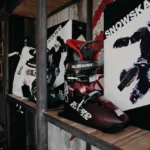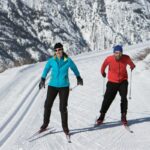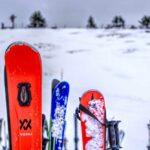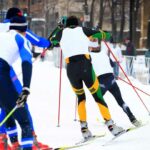Cross country skiing is a popular and exhilarating winter sport that allows enthusiasts to enjoy the great outdoors while getting a fantastic workout. Having the right equipment is crucial for a safe and enjoyable skiing experience, and one of the most important components is the ski boot binding.
The binding securely connects the ski boot to the ski, ensuring proper control and stability during your skiing adventure. In this comprehensive guide, we will explore the various types of cross country ski boot bindings, their advantages and disadvantages, and provide tips on choosing the perfect binding for your needs.
Common Types Of Cross Country Ski Boot Bindings
The most common types of cross country ski boot bindings are NNN and SNS. NNN stands for New Nordic Norm, and SNS stands for Salomon Nordic System. The main difference between these two types of bindings is the way they attach to the boot. NNN bindings have two metal ridges that fit into corresponding grooves on the sole of the boot, while SNS bindings have a single metal bar that snaps into a groove on the sole of the boot.
There are also other types of cross country ski boot bindings, such as three-pin bindings, which are less common but still used by some skiers. Three-pin bindings have three metal pins that fit into holes on the sole of the boot. These bindings are typically used with older-style boots that have a duckbill-shaped toe. Skiers who use three-pin bindings often prefer them for their simplicity and durability.
Cross Country Ski Boot Binding Types
Cross country skiing is a great way to enjoy the outdoors and get some exercise in the winter months. Choosing the right binding system is essential for a safe and enjoyable skiing experience. There are several types of binding systems available, each with its own advantages and disadvantages.
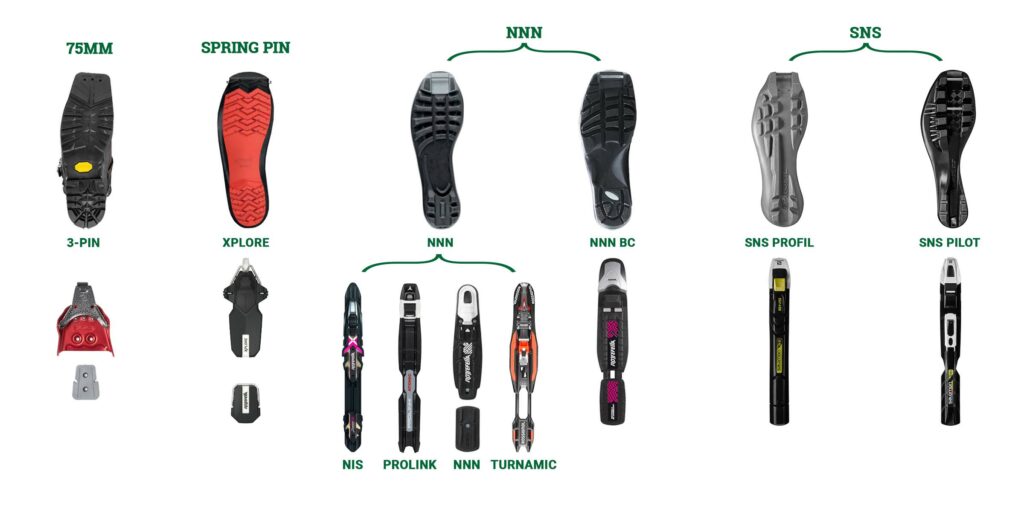
NNN Binding System
The New Nordic Norm (NNN) binding system is the most common type of binding system used for cross country skiing. It is compatible with NNN boots, which have two small grooves on the sole of the boot that fit into the binding.
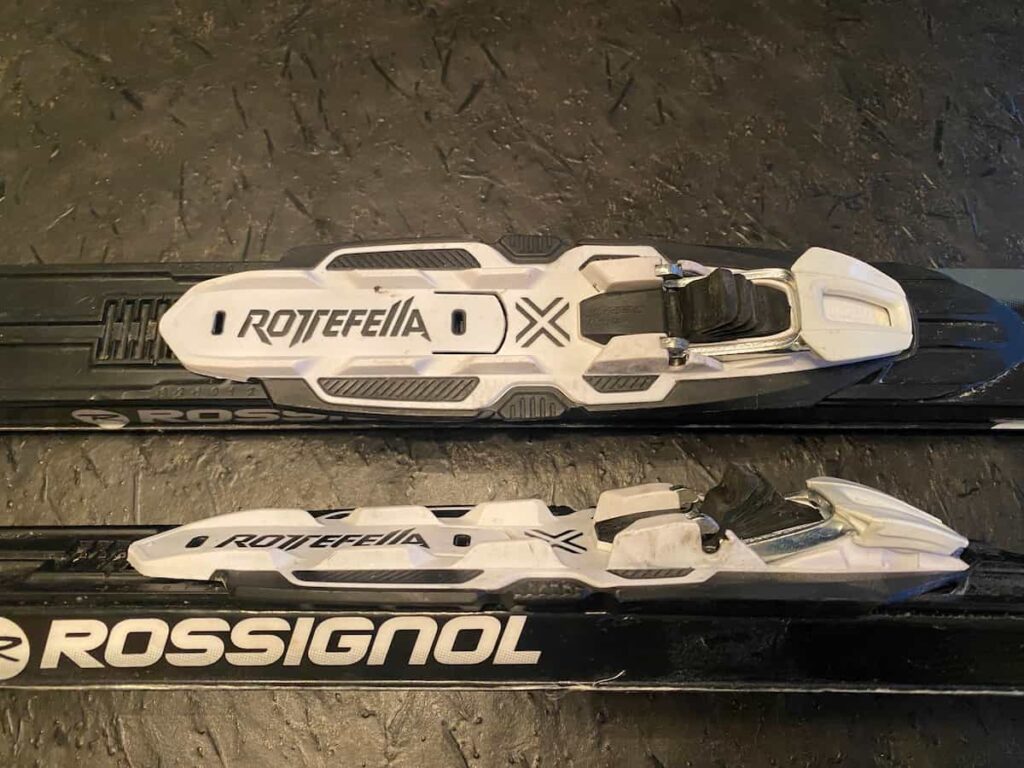
The NNN binding system is known for its ease of use and reliability, as it features a simple step-in mechanism and automatic release. Additionally, it is lightweight and provides good control and stability on the trail.
The NNN system also offers a variation called NNN-BC (backcountry), designed specifically for off-track skiing and providing extra stability and durability for rougher terrain.
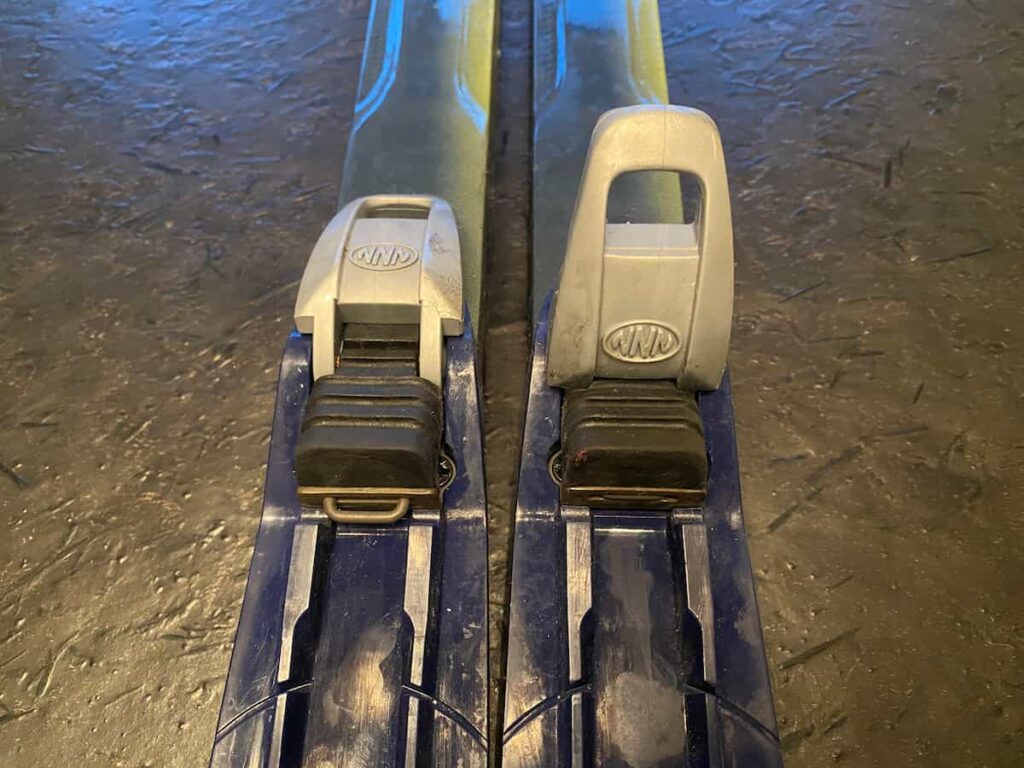
SNS Binding System
The Salomon Nordic System (SNS) binding system is another popular option for cross country skiers. It is compatible with SNS boots, which have a single bar on the sole of the boot that fits into the binding. The SNS binding system is known for its strong connection between the boot and the ski, which provides good power transfer and control.
However, it can be more difficult to use than the NNN binding system, and it is not as widely available. The SNS system has two variations: SNS Profil and SNS Pilot. The Profil system features a single bar and ridge, while the Pilot system has two bars, offering better torsional control and stability.
Prolink Binding System
The Prolink binding system is a newer option that is compatible with both NNN and SNS boots. It is designed to provide a strong connection between the boot and the ski while also being lightweight and easy to use.
The Prolink binding system is a good choice for skiers who want a versatile binding system that can be used with different types of boots. This system offers low ski-to-boot contact for increased snow feel and precise energy transmission.
Rottefella NIS Binding System
The Rottefella NIS (Nordic Integrated System) binding system is a unique option that allows skiers to adjust the position of the binding on the ski. This can be useful for fine-tuning the ski’s performance based on the skier’s weight, skill level, and the conditions of the trail.
The Rottefella NIS binding system is compatible with NNN boots and provides good control and stability on the trail. It’s worth noting that the NIS system is being gradually replaced by the NNN system, which includes NIS compatibility.
75mm Binding System
The 75mm binding system, also known as the 3-pin binding system, is an older option that is still used by some cross country skiers. It is compatible with 75mm boots, which have three pins on the sole of the boot that fit into the binding.
The 75mm binding system is known for its durability and reliability, but it can be more difficult to use than other binding systems. It is also heavier and provides less control and stability on the trail. This system is typically favored by telemark skiers and those who prefer a more traditional skiing experience.
Compatibility Of Cross Country Ski Boot Bindings
When selecting cross country ski boot bindings, it’s essential to ensure compatibility between the bindings and the boots. Mixing incompatible systems can lead to poor performance, discomfort, and potential accidents on the trail. Always check the boot’s compatibility rating, whether it is NNN, SNS, or 75mm, before purchasing bindings.
To help you identify the right match, here are some compatibility guidelines:
- NNN bindings work with NNN boots and NIS-compatible boots.
- SNS bindings work with SNS Profil and SNS Pilot boots, but they are not interchangeable. Profil bindings work only with Profil boots, and Pilot bindings work only with Pilot boots.
- Prolink bindings work with both NNN and SNS boots, offering a versatile option for skiers.
- Rottefella NIS bindings are compatible with NNN boots and NIS-compatible boots.
- 75mm bindings work with 75mm boots, which have a distinctive three-pin configuration on the sole.
Choosing the Right Binding Type
Selecting the appropriate binding type depends on various factors, including your skill level, skiing preferences, and specific needs. Here are some tips to help you choose the right binding system:
- Skill level: Beginners may prefer the NNN or Prolink binding systems, as they offer ease of use, lightweight construction, and good control on the trail. More experienced skiers might opt for the SNS system, which provides excellent power transfer and control, or the 75mm system if they prefer a traditional skiing experience.
- Skiing style: Consider the type of skiing you plan to do. For groomed trails and classic skiing, the NNN, SNS, or Prolink systems are suitable options. For backcountry skiing and off-track exploration, the NNN-BC or 75mm systems offer greater stability and durability.
- Boot compatibility: As mentioned earlier, ensure that the binding system you choose is compatible with your ski boots. Always check the compatibility rating before purchasing bindings.
- Adjustability: If you prefer to fine-tune your ski’s performance, consider the Rottefella NIS binding system, which allows for adjustable positioning on the ski.
- Versatility: If you want a binding system that can be used with different types of boots, the Prolink binding system offers compatibility with both NNN and SNS boots.
Conclusion
After exploring the different types of cross country ski boot bindings, it is clear that there are a variety of options available to suit different preferences and skill levels. The most common types of bindings are the SNS and NNN systems, which are both automatic bindings that allow for easy step-in and release.
For those who prefer a more traditional binding, the three-pin system is still available but less common. This binding requires manual securing and releasing of the boot from the binding, which can be more challenging for beginners. It is important to note that when purchasing bindings, they must be compatible with the boots being used.
This means it is essential to check the boot’s rating, whether SNS or NNN, before purchasing bindings. Overall, choosing the right cross country ski boot binding is a personal choice based on individual preferences and skill level. Whether opting for the convenience of automatic bindings or the traditional feel of manual binding, there is a binding that will suit every skier’s needs.
- Types of Skiing Terrains: A Comprehensive Guide for Every Skier - December 6, 2024
- Skiing Nutrition: Essential Nutritional Advice and Meal Planning for Skiers - August 15, 2024
- Backcountry Skiing Explained: Essential Tips and Gear - August 8, 2024

